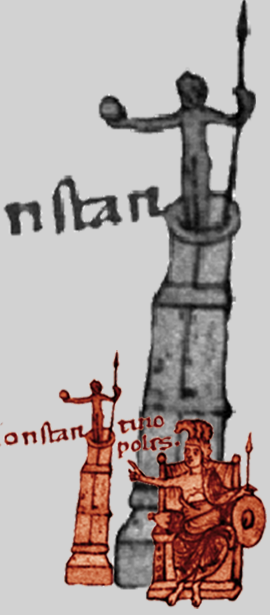Spaces that Matter
Enclosed and Secluded Places in Early and Middle Byzantine Hagiography
(FWF project: P34478: 01.03.2022–28.02.2026)

Saints’ Lives, stories about the lifestyle and conduct of holy men and holy women, are one of the most prolific genres of Byzantine literature. Through vivid descriptions, the Byzantine authors primarily endeavour to sketch the holiness of their heroes and heroines. At the same time, the authors provide their audiences with exemplary figures to be imitated and entertain them with scenes of everyday life. In the last decades, scholarship has turned to the literary aspects of saints’ Lives.
Asceticism and holiness seem to be interwoven with the notions of isolation and spatial confinement (ἐγκλεισμός), but a thorough analysis of the nexus between space and sainthood is still lacking. To fill this gap, the project Spaces That Matter will investigate the narrative depictions of enclosed and secluded places in a large and representative body of early and middle Byzantine saints’ Lives (4th–12th centuries) within their literary-generic, historical and socio-cultural context.
Spaces That Matter has a twofold aim: first, to examine how places of confinement and seclusion are depicted in saints’ Lives on a literary-narrative level; second, to study how the protagonists, predominantly male and female ascetics and monastics, experience their stay in such places and to what extent this experience affects both the development of the narrative and the protagonists’ character, especially their spiritual progress. To achieve this double goal, the project draws on modern theoretical concepts, such as space vs. place and liminality. Confined and isolated places, namely spaces with a specific meaning and socio-cultural connotations, are understood as transitional/liminal phases in which the protagonists’ physical endurance and spiritual maturity develop, contributing to their identity as holy men and holy women. The experience of ascetic self-confinement is investigated in conjunction with the gender and emotions of each protagonist, as well as through comparisons with previous saintly models, such as the first Christian martyrs. Comparisons with other literary genres (e.g., hymns, novels) will be also drawn. In this way, the project will contribute to a more nuanced understanding of Byzantine saints’ Lives.
This four-year project housed at the Austrian Academy of Sciences is being undertaken by Carolina Cupane (project leader) and Christodoulos Papavarnavas (postdoc researcher) with the guidance of an international advisory board of specialists and will result in several publications.
Conference Spaces Make Saints - Experiencing Confinement in Byzantine Hagiography: 15-17 November 2023 (Abstracts)
Cooperation partners
• Prof. Stephanos Efthymiadis, Open University of Cyprus
• Prof. Antonia Giannouli, University of Cyprus
• Prof. Martin Hinterberger, University of Cyprus
• Prof. Christian Høgel, Lund University
• Prof. Markéta Kulhánková, Czech Academy of Sciences/Masaryk University
• Prof. Alexei Lidov, Moscow State University/Research Centre for Eastern Christian Culture/Russian Academy of Arts
• Prof. Claudia Rapp, University of Vienna/Austrian Academy of Sciences
• Dr. Elisabeth Schiffer, Austrian Academy of Sciences
• Prof. Myrto Veikou, University of Patras/Uppsala University
• Prof. em. Bryan Ward-Perkins, University of Oxford


